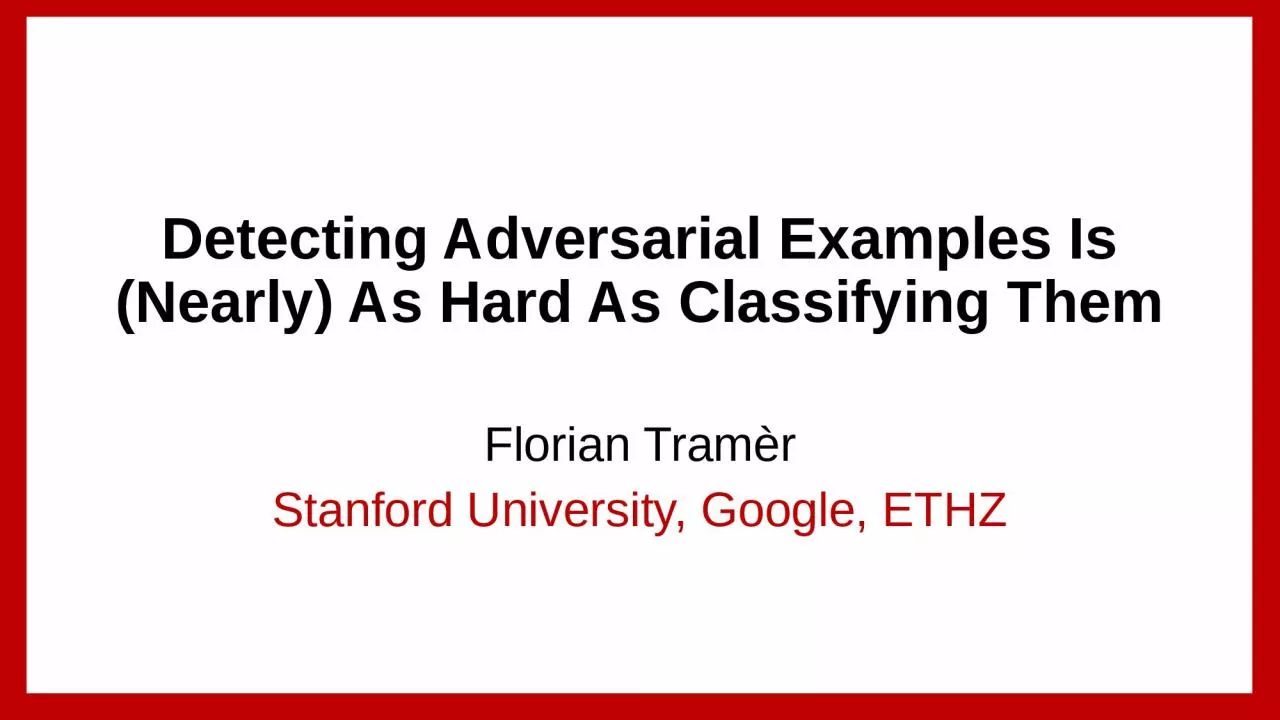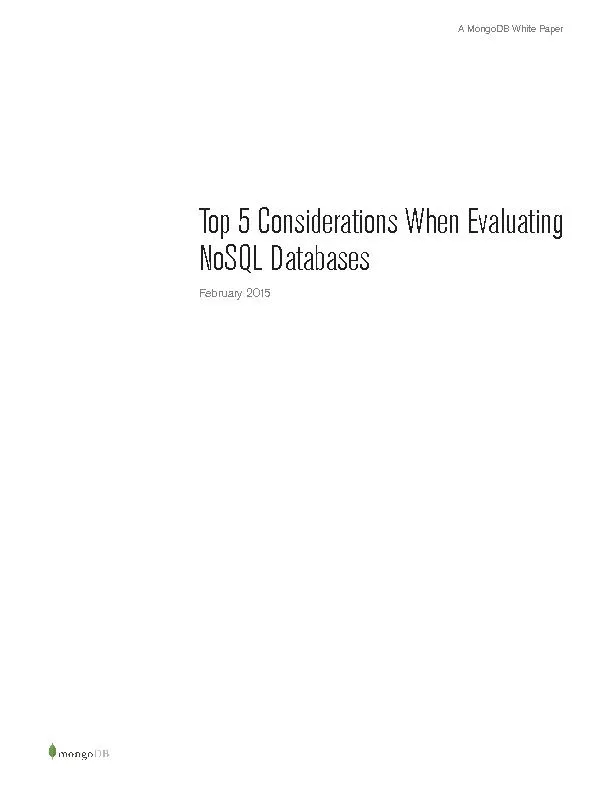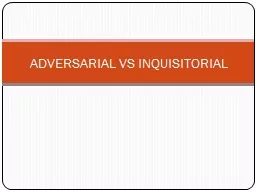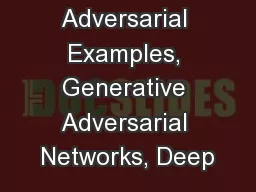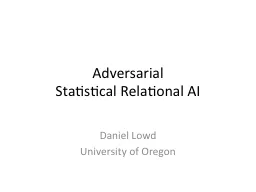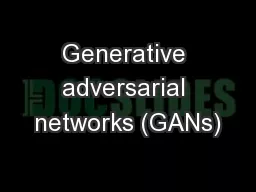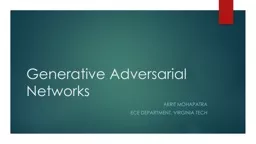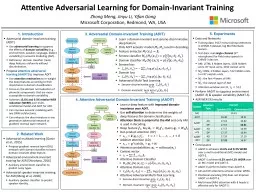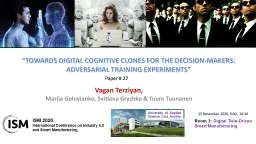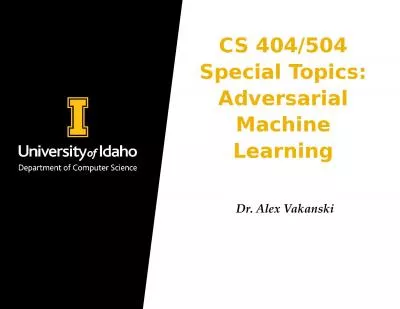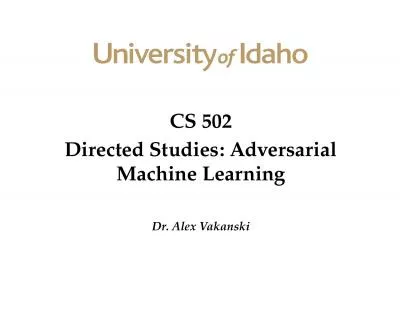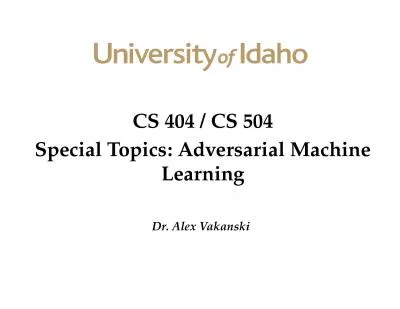PPT-Detecting Adversarial Examples Is (Nearly) As Hard As Classifying Them
Author : ariel | Published Date : 2023-06-22
Florian Tramèr Stanford University Google ETHZ ML suffers from adversarial examples 2 90 Tabby Cat 100 Guacamole Adversarial noise Robust classification is hard
Presentation Embed Code
Download Presentation
Download Presentation The PPT/PDF document "Detecting Adversarial Examples Is (Nearl..." is the property of its rightful owner. Permission is granted to download and print the materials on this website for personal, non-commercial use only, and to display it on your personal computer provided you do not modify the materials and that you retain all copyright notices contained in the materials. By downloading content from our website, you accept the terms of this agreement.
Detecting Adversarial Examples Is (Nearly) As Hard As Classifying Them: Transcript
Download Rules Of Document
"Detecting Adversarial Examples Is (Nearly) As Hard As Classifying Them"The content belongs to its owner. You may download and print it for personal use, without modification, and keep all copyright notices. By downloading, you agree to these terms.
Related Documents

